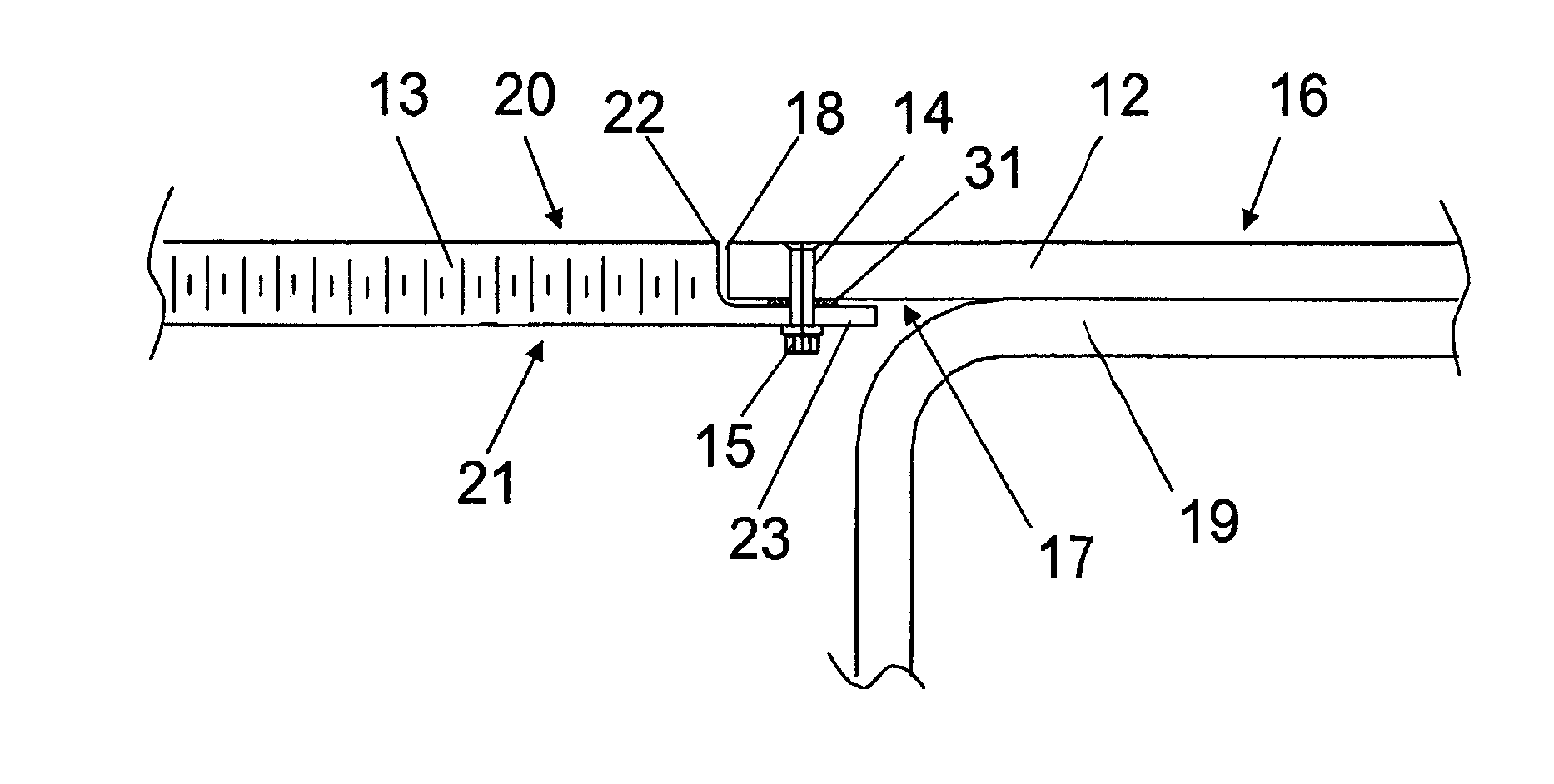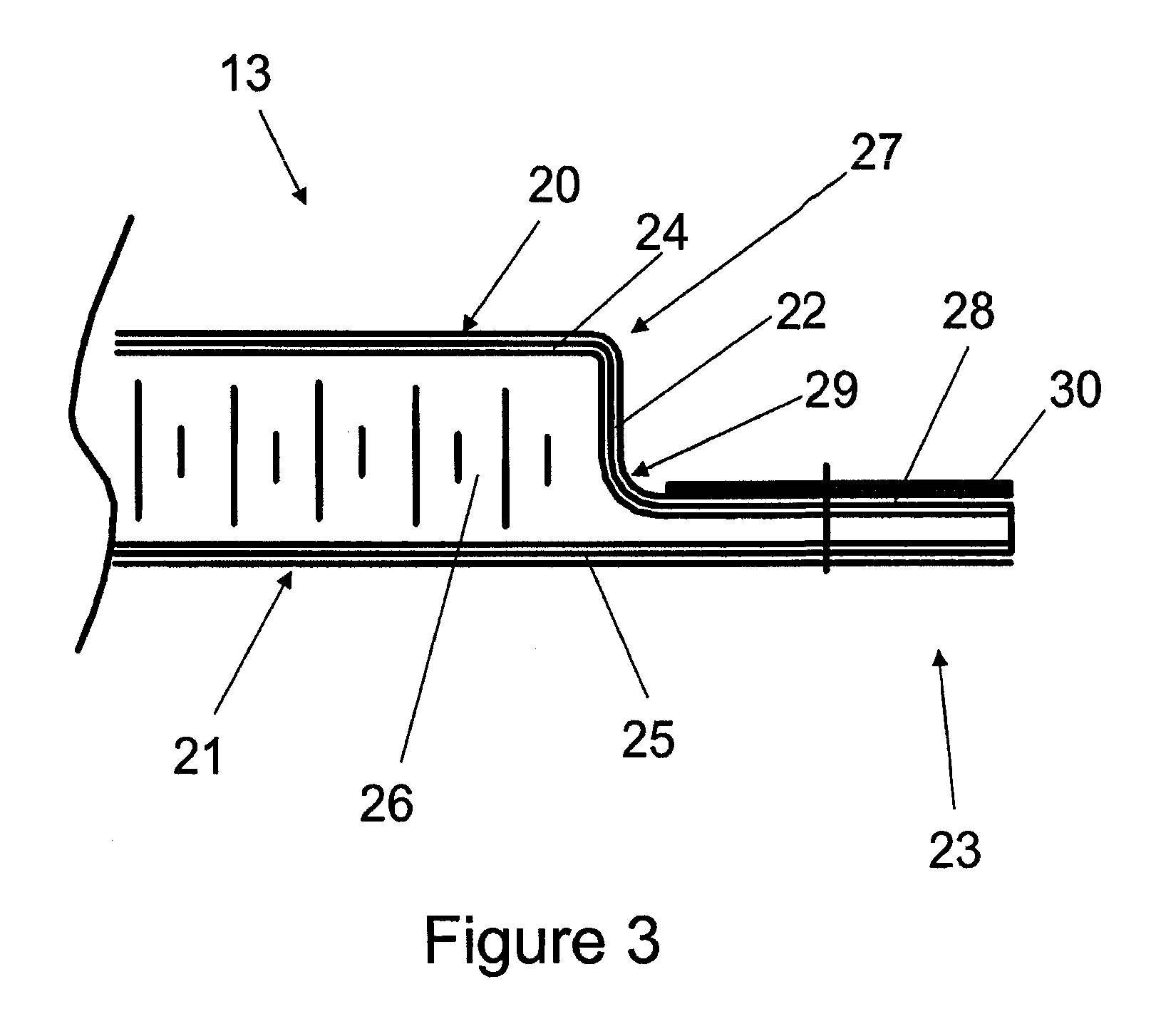Joint
a joint and joint technology, applied in the field of joint, can solve the problems of increased fuel burn, eroded edge of the panel, difficult and time-consuming process, etc., and achieve the effect of reducing the bending stress in the land
- Summary
- Abstract
- Description
- Claims
- Application Information
AI Technical Summary
Benefits of technology
Problems solved by technology
Method used
Image
Examples
Embodiment Construction
)
[0020]An aircraft wing box upper cover 12 is attached to a trailing edge shroud panel 13 with a bolt 14 and nut 15. The cover 12 has an outer aerodynamic surface 16, an inner surface 17, and a trailing edge 18. The cover 12 forms part of an aircraft wing box structure of conventional type, and is fixed to the upper flange of the rear spar 19, as shown in FIG. 2. The panel 13 extends from the trailing edge 18 of the wing box structure to a trailing edge flap device (not shown), so as to complete the aerofoil profile of the wing. The panel 13 has an outer aerodynamic surface 20, an inner surface 21, a leading edge 22, and a land 23. The land 23 extends forwardly from the panel leading edge 22 over the inner surface 17 of the cover 12.
[0021]To achieve a smooth aerodynamic surface, the outer surface 16 of the cover 12 and the outer surface 20 of the panel 13 must be aligned with each other within a strict tolerance range. Outside of this range, the step created in the outer surface acr...
PUM
| Property | Measurement | Unit |
|---|---|---|
| Thickness | aaaaa | aaaaa |
Abstract
Description
Claims
Application Information
 Login to View More
Login to View More - R&D
- Intellectual Property
- Life Sciences
- Materials
- Tech Scout
- Unparalleled Data Quality
- Higher Quality Content
- 60% Fewer Hallucinations
Browse by: Latest US Patents, China's latest patents, Technical Efficacy Thesaurus, Application Domain, Technology Topic, Popular Technical Reports.
© 2025 PatSnap. All rights reserved.Legal|Privacy policy|Modern Slavery Act Transparency Statement|Sitemap|About US| Contact US: help@patsnap.com



